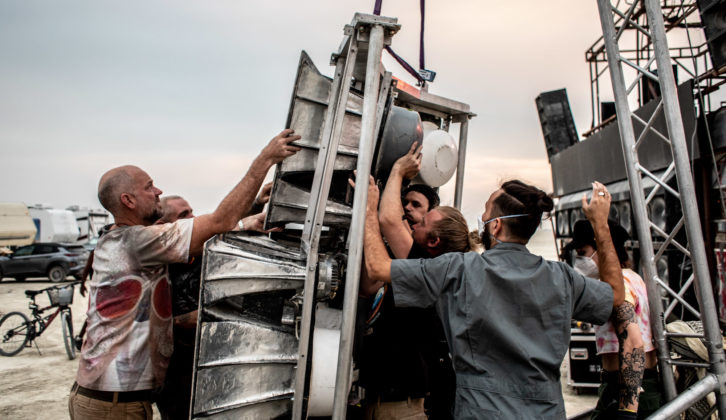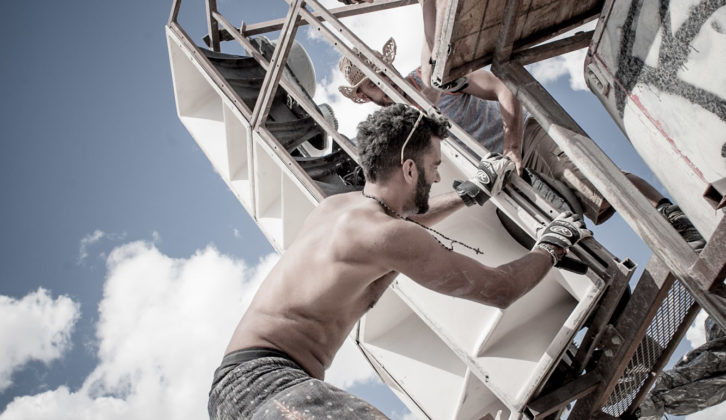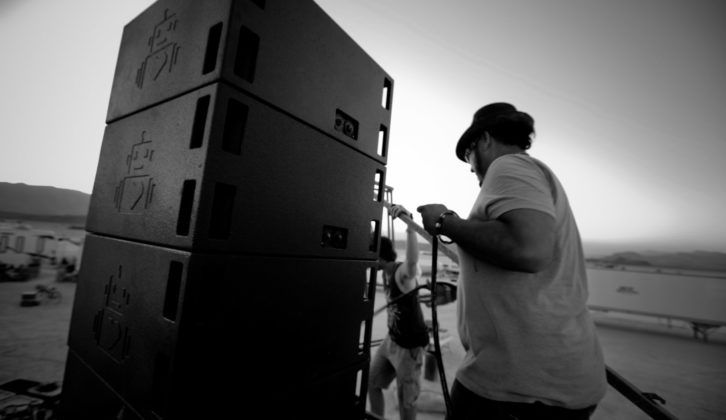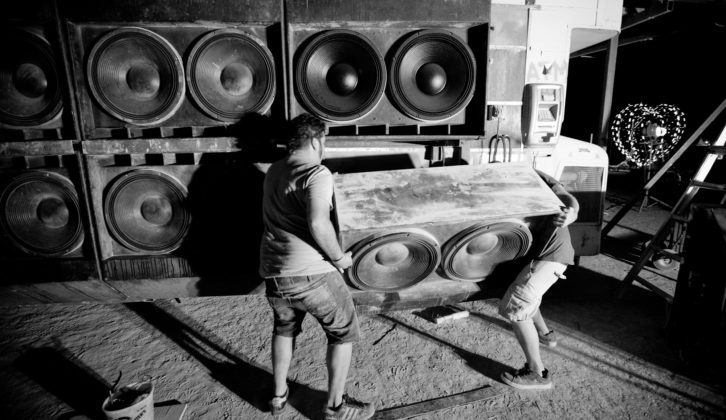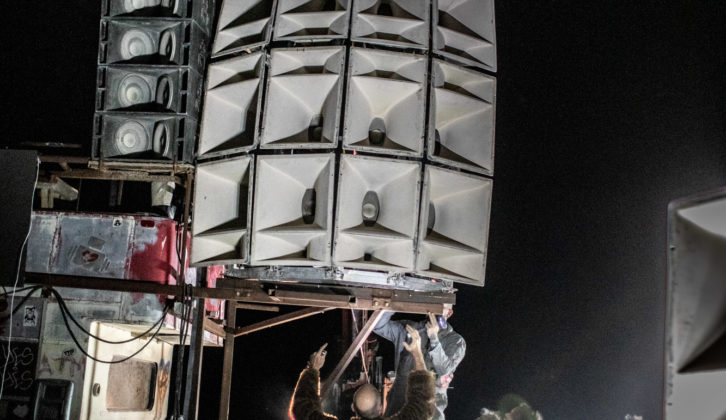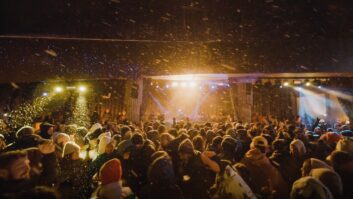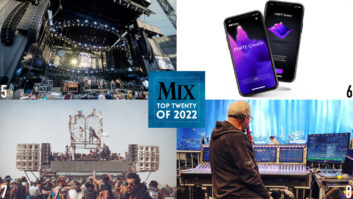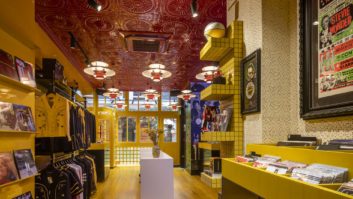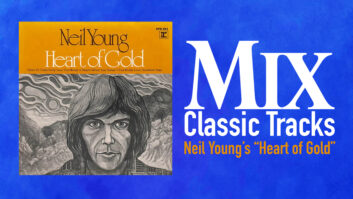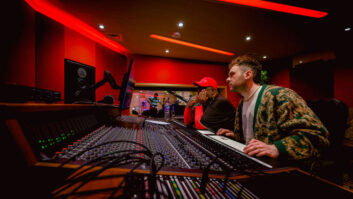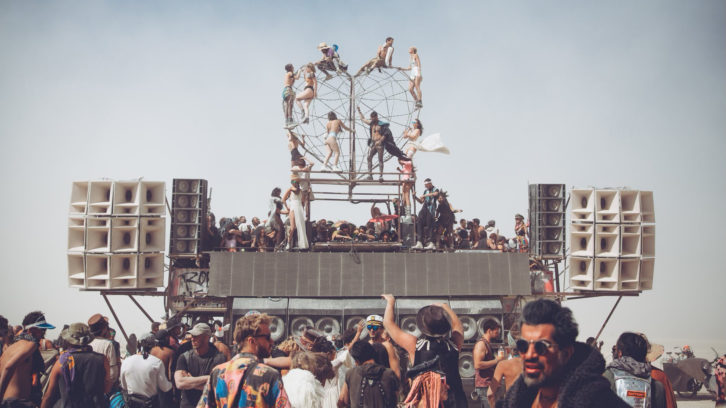
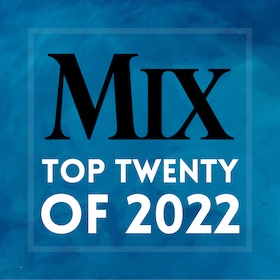 This was Mix’s 7th most-read article of 2022!
This was Mix’s 7th most-read article of 2022!
New York, NY (April 22, 2022)—Every year, thousands converge in Nevada’s Black Rock Desert for Burning Man—the annual cultural project/party/ art tech explosion that attracts upwards of 80,000 to revel and self-express in the middle of nowhere. Part of its appeal for music fans has been the evolution of “sound camps” that present artists, musicians and DJs throughout the event, and among them, Robot Heart has grown over the last 15 years to become one of the most celebrated. The sound camp is centered around a radically modified 1972 Ipswitch double-decker bus, outfitted with a stage and homegrown audio system that covers up to 10,000 partiers a night as it serves up electronic music performances that kick off at midnight and roll on well into mid-morning.
This spring, however, the Robot Heart bus will make a rare appearance far from the playa in a very different kind of wilderness—New York City’s Central Park—as it becomes the focal point of Fare Forward, a two-day festival of music, artistic experiences and more. Musical guests for the April 30-May 1 event include DJ duo Swamy & Dill, musical artists Formerly, DJ/Cirque du Soleil founder Guy Lalibert, Turkish DJ/producer Carlita, musician Acid Pauli, musical artists The Illustrious Blacks, Canadian folk music act The Weather Station, DJ/producer Behrouz, British musicians Cymande, DJ Francesca Lombardo and Danish electronic artist Be Svendsen.
Building The Robot Heart Sound System at Burning Man
Wherever the bus roams, it’s run by a loose collective of 80-100 people with a core team of roughly 20 members who are more deeply involved in the production of events. “Robot Heart is a community of doers and dreamers, and is the result of an incredible amount of energy and time contributed over the years,” said a member of the organization’s audio team. “There are so many people who have brought their passion to this project, and in discussing it, we always take the approach that it’s not about any of us individually.”
One name unquestionably connected to the organization, however, is the late George “Geo” Mueller who first brought the bus to Burning Man in 2008. Over the ensuing years, the vehicle evolved with both LED lighting—Mueller cofounded LED-oriented companies Color Kinetics and Ecosense— and a hand-constructed audio system that has steadily changed and expanded as the sound camp has grown. Following Mueller’s unexpected death due to a brain aneurysm in March, 2021, the Fare Forward festival in New York marks one of Robot Heart’s first official events since then as the collective explores how to best continue its founder’s legacy and ethos. “What’s great about Central Park is we can share it with people from all different walks of life who may not have the opportunity to go to Nevada to Burning Man…to come and see the sound system, see the bus and experience this,” said another member involved in coordinating the collective.
The bus is street legal and spends most of the year housed near the playa in Gerlach, NV, while its audio system lives in Oakland, CA with the group’s lead audio engineer. Driving a 50-year-old bus across the U.S. might not be the most practical idea, of course, so for the trip, it is getting a three-day ride on a lowboy semi-trailer, followed by a 53-foot semi carrying the sound system and more. Once the convoy reaches the Big Apple, the system and crown-like heart will be built onsite over the course of two days and added to the bus.
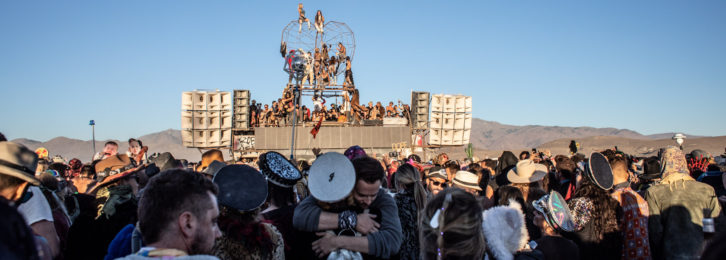
If the Robot Heart collective is all about art and experiences, it’s fair to say that the sound system is a manifestation of that philosophy, as it is almost entirely handmade—a choice made in equal parts for the aesthetic, necessity and challenge it entails. “It’s a combination of doing what we can with sometimes constrained resources, but also aiming to build the best system we can,” said the audio team member. “One of our core values is that every year, we do something to continue to improve the system—so this year, for example, we’re working on redesigning bass cabinets, and that’ll be a big change.
“The only components that are ‘off the shelf’ are the actual drivers in the speakers and some of the stuff in our racks,” he added. “Obviously, we’re using amps and processing from different vendors, but it’s stuff that we’ve put together in a unique combination. The sound system itself is a piece of art in its own right and it’s completely unique.”
The four-way speaker system is designed with sub cabinets mounted across the lower deck of the bus facing the crowd, while above them is a multi-panel LED signage rig across the upper deck/stage. Immediately right and left of the signage are black mid stacks, flanked by distinctively white point-source arrays, with the larger horns providing mid-highs and smaller horns using compression drivers for highs. The point-source arrays, which sit in an aluminum exoskeleton intended to make them easier to aim, were made by the audio team working from a vintage late-1980s mold. “It’s an old design that we’ve modified and adapted,” said the audio team member. “We’ve stiffened them and added composite to help the horn surfaces more effectively project sound in the context that we need them to.” Powering all that is an 80 KWh generator located inside the bus.
“We are meticulous about phase alignment and tuning,” he added. “It’s perhaps the cleanest sound system on the planet; there’s lots of headroom and it’s just beautiful the way that it sounds…. The clarity is incredible and it doesn’t need to be overpowering.”
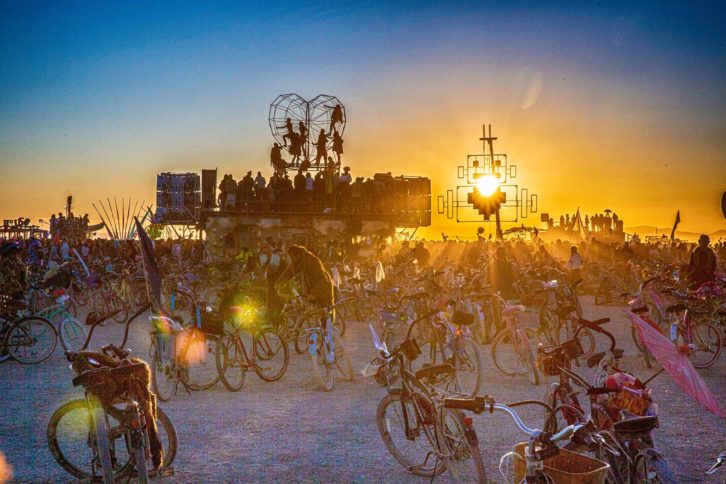
Out in the desert, Robot Heart is best known for its house music, but the Fare Forward event has a more diverse, New York-oriented lineup intended to be more inclusive. “We want to show people that the bus doesn’t just play the music [that] I think it may be pigeonholed for playing,” said the coordinating member. That said, the audio team member noted that Robot Heart’s Burning Man lineups have made it “the defining force behind the Playa House sound, and we’ve also had some exceptional live acts. Thievery Corporation, Bob Moses, HVOB have all come and played live with us; we had an acoustic set with RY X, which was incredible.”
Much as the audio system has evolved over time, Robot Heart’s musical programming may start to as well, with the East Coast event providing an opportunity to discover what else can be brought to the table. “We want to continue to grow and evolve, and push ourselves as well,” said the coordinating member. “That’s what’s exciting about going to a new location; we’ve held events in New York before, but we’ve never brought the bus—and there’s a very different context when this bus is the sound system. I think we all want to see what happens, because no one really knows what this is going to feel like. There’s some ‘unknown’ now, which is really exciting.”
